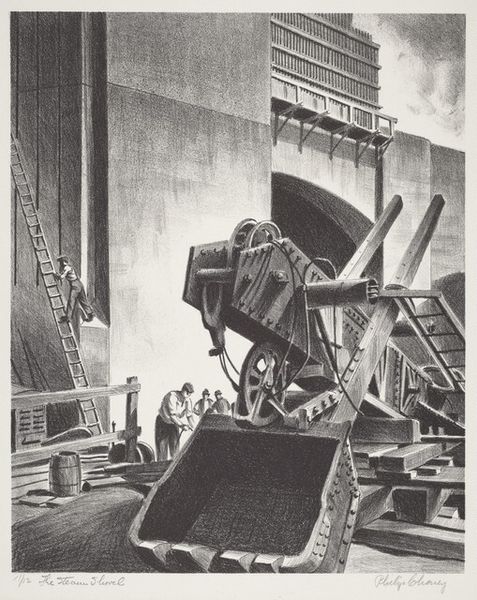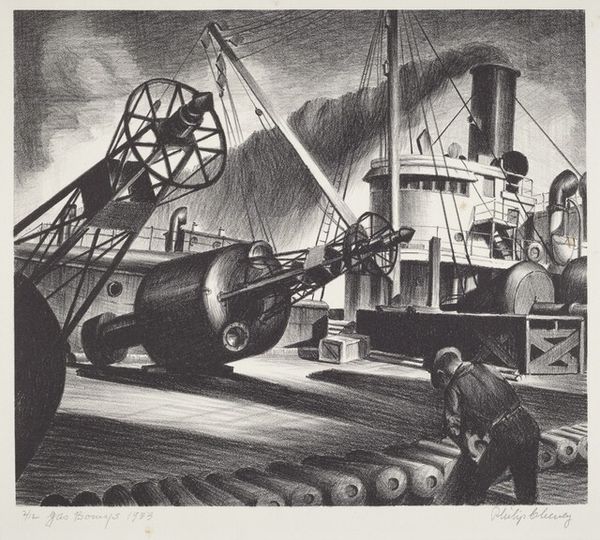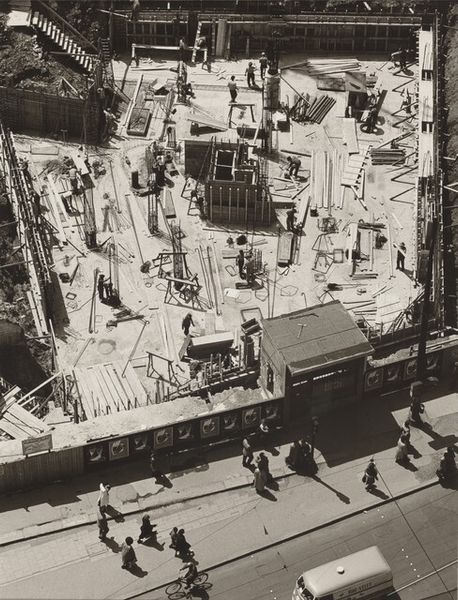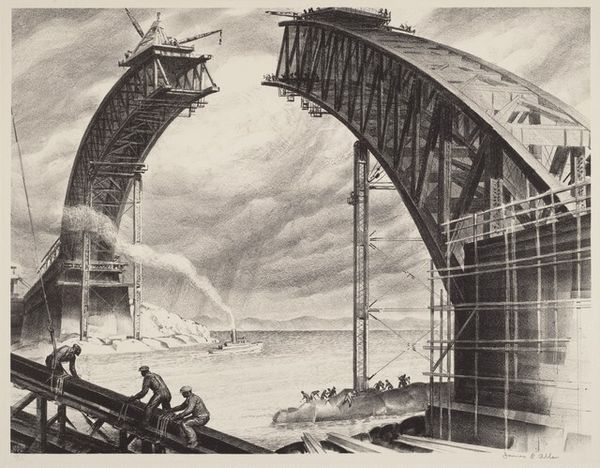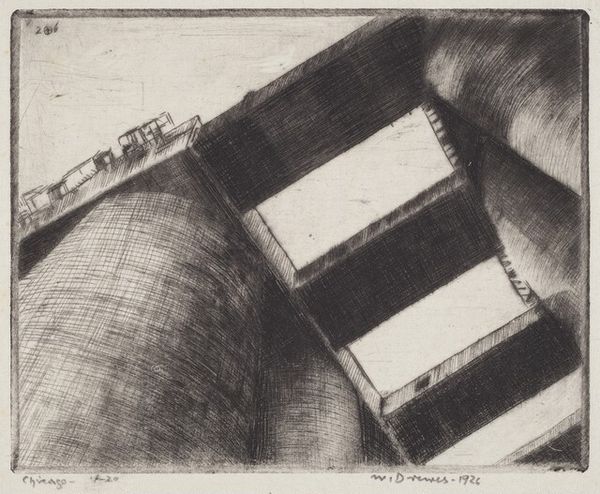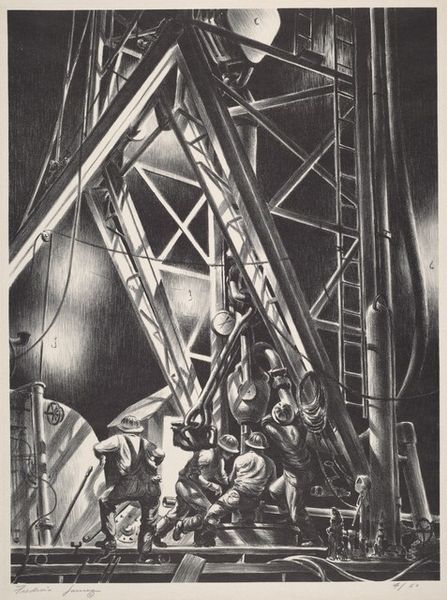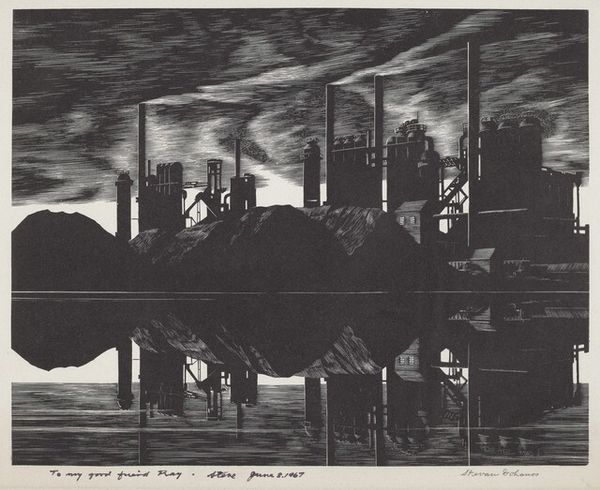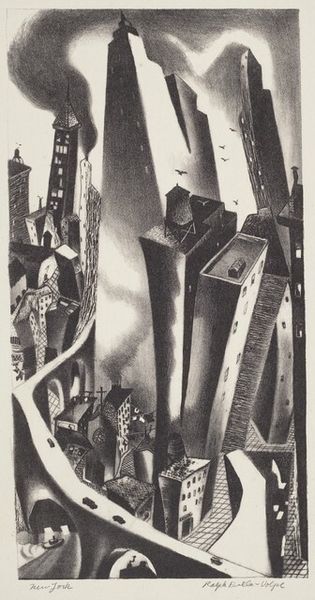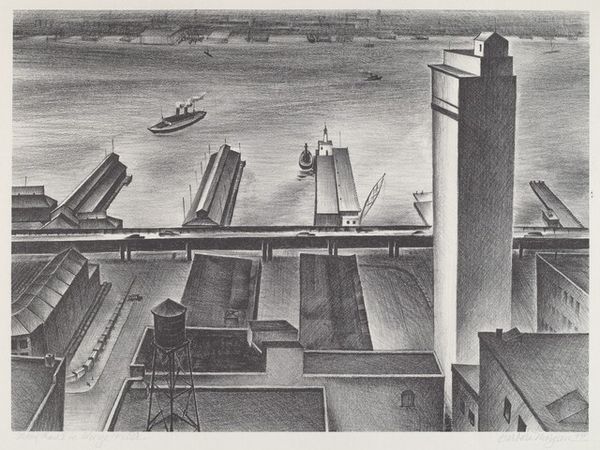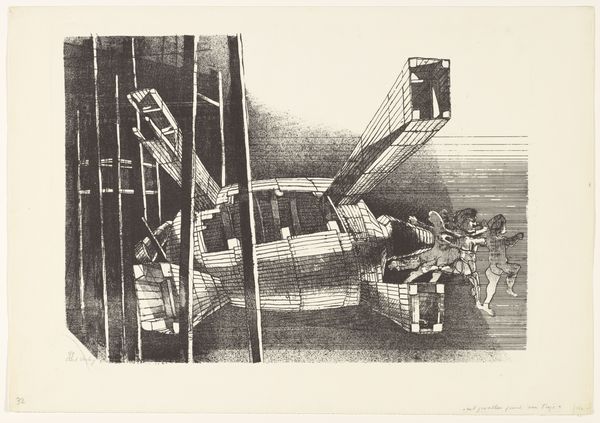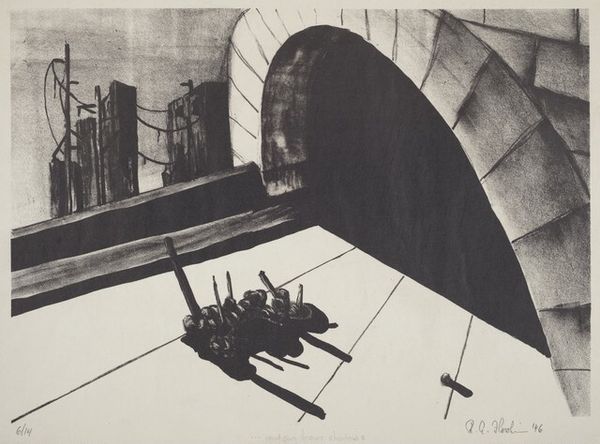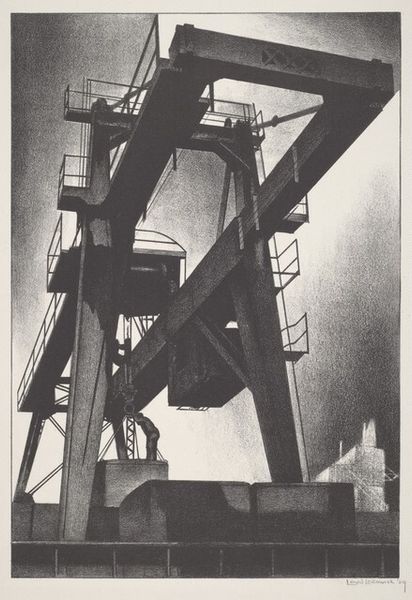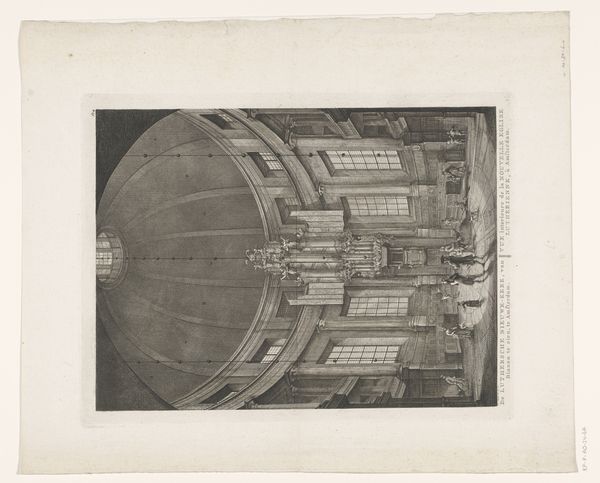
print, charcoal
# print
#
landscape
#
charcoal drawing
#
geometric
#
surrealism
#
charcoal
#
modernism
#
realism
Dimensions: image: 202 x 238 mm sheet: 274 x 318 mm
Copyright: National Gallery of Art: CC0 1.0
Curator: This print, dating from 1949, is entitled "Untitled (Refinery Interior I)" and was created by Lynd Kendall Ward. The medium is charcoal. Editor: My first thought is how stark it is! The artist has really mastered using black and white to give the scene an industrial and powerful mood. It’s also so geometrically strong; every line has such presence. Curator: The geometry of the scene absolutely dictates how we read its message, as Lynd Kendall Ward often explores class and the economic structure in the United States. This particular piece speaks to the plight of the working class, specifically industrial workers and how they are nearly swallowed up by the immensity of these factory landscapes. The way the artist shows these workers on a very small scale really speaks to their place in society at this time. Editor: It's quite striking how the artist contrasts areas of detail with those of near abstraction, achieved through the expert application of shading. It really does invite a sense of awe at the scale of the structures portrayed, these hard, geometric shapes. Even that stark, beaming light almost overwhelms the delicate human figures. Curator: Absolutely, the geometric, nearly surreal qualities you point out really lend themselves to discussing the socio-political atmosphere surrounding industry during this time. When situated next to the workers on site, those geometric shapes and that forceful light you observed symbolize power and control over not only the land, but the lives of laborers as well. In my reading of the piece, this commentary reveals Ward’s stance on labor, particularly when looking through the lens of capitalist greed and industrialism during the mid 20th century. Editor: A compelling reading! I agree that the stark contrasts and geometries underscore a visual hierarchy and narrative tension at play here. Looking closely, the details present a network of complex relationships; one appreciates more and more the artistry and complexity in such seemingly simple forms. Curator: Examining this piece has been incredibly helpful for re-contextualizing how Ward portrayed the lives of industrial workers. Editor: Yes, I’m now leaving with an entirely new perspective, now attuned to the artist’s compelling use of form and balance and, too, their symbolic socio-political meanings.
Comments
No comments
Be the first to comment and join the conversation on the ultimate creative platform.
